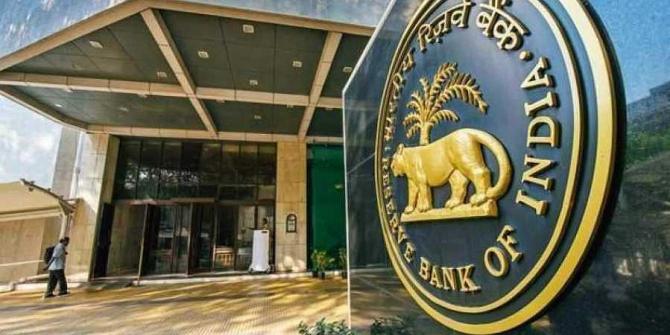GDP growth of 7.7 per cent in the first half of this fiscal has "left sceptics gasping and woefully behind the curve", an RBI article said on Wednesday.

It also stressed the buildup in the growth momentum is likely to be sustained.
The article on the state of the economy published in the Reserve Bank's December Bulletin on Wednesday also said CPI-based retail inflation is expected to ease to 4.6 per cent in the first three quarters of 2024-25 from 5.6 per cent in November.
It said the pace of global growth may slow further in 2024 while disinflation at varying pace in different geographies may pave the way for interest rate reductions.
In India, the broad-based strengthening of economic activity that is underway will likely be sustained by easing input costs and corporate profitability, said the article authored by a team led by RBI deputy governor Michael Debabrata Patra.
"In a latest show of strength and poise, India left sceptics gasping and woefully behind the curve as real GDP clocked a growth of 7.7 per cent in the first half of 2023-24," it said, and added the key value of these numbers lies in what they tell about the future.
The article also said as inflation eases, a revival of topline growth will support the manufacturing expansion.
Among services, construction activity remains robust, boosted by housing demand.
Other categories of services are normalizing from the post-pandemic revenge spending, but underlying momentum remains resilient.
The authors said the main risk to the outlook stems from the evolution of inflation in the months ahead.
"The recurrence of food price spikes in November has punctured a brief respite in September and October.
"It is expected that these pressures will linger on into December before the usual winter softening sets in and dispels these adversities," the authors said.
The article further noted that the repetitive nature of food imbalances impinging on prices reinforces the view that for India, it is the food category that is the true ‘core' of inflation, with second-order effects that delay the policy goal of aligning headline inflation with the target.
Consequently, a lasting solution to these sporadic flares is the "only panacea", it said.
"Supply augmenting measures and adjustments have the lead role here, but monetary policy shall have to respond if food inflation as a whole becomes lastingly elevated and sends secondary impulses across other prices," it said.
On the other hand, core inflation has been steadily disinflating, attesting to the efficacy of monetary policy actions and stance.
Meanwhile, the Reserve Bank said the article does not represent the views of the central bank.
Another article published in the Bulletin on ' Government Finances 2023-24: A Half-Yearly Review' said the combined finances of the Centre and the States remained robust in the April-September period of the year.
The Centre recorded robust tax collections, both direct and indirect taxes reflecting sustained recovery of the economy, enhanced tax governance and administration as well as improved profitability of the corporate sector, it said.
Lower disinvestment receipts are likely to be offset by sharp gains in non-tax revenues, mainly attributable to higher dividends from the Reserve Bank and other financial institutions.
On the expenditure front, it said the capex thrust has ensured significant improvement in the quality of expenditure of the central government.
By reiterating its GFD target of 4.5 per cent of GDP by 2025-26, the Centre has exhibited its firm commitment to fiscal consolidation while at the same time prioritising capital expenditure to drive the recovery in growth and create a virtuous cycle to crowd in private investment.
The Centre achieved more than half of its budgeted revenue in H1:2023-24 while containing its expenditure to less than half of what it had projected for the entire financial year.
This would augur well for the Centre to meet its GFD target of 5.9 per cent of GDP for 2023-24.
The states too have witnessed strengthening of their fiscal parameters as is evident from their continued buoyancy in tax revenues.
However, it said the states grapple with several challenges in sustaining the momentum of their capital expenditure, on both the expenditure and revenue fronts.
The reversion to the old pension scheme (OPS) by a few states and reports of some other states moving in the same direction would exert a huge burden on state finances and restrict their capacity to undertake growth enhancing capital expenditures.











 © 2025
© 2025